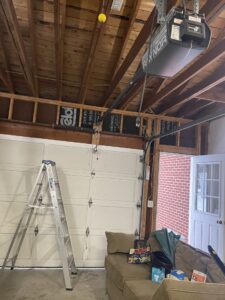A well-installed garage door enhances security, improves energy efficiency, and boosts curb appeal. If you’re considering a new garage door installation, understanding the process and key factors involved will help you make the best choice for your home.
Benefits of a New Garage Door Installation
A new garage door installation offers several advantages, including:
- Increased Security: Modern garage doors come with enhanced locking mechanisms.
- Energy Efficiency: Insulated doors help regulate temperature and reduce energy costs.
- Enhanced Curb Appeal: A stylish garage door can significantly improve your home’s exterior.
- Higher Property Value: Homes with updated garage doors often attract higher resale values.

Choosing the Right Garage Door
1. Types of Garage Doors
When planning a garage door installation, consider the different styles available:
- Sectional Garage Doors: The most common type, made of panel sections that slide up.
- Roll-Up Garage Doors: Ideal for commercial spaces with limited ceiling space.
- Side-Hinged Garage Doors: A traditional choice that swings outward.
- Tilt-Up Garage Doors: Includes canopy-style and retractable doors.
2. Garage Door Materials
Selecting the right material ensures durability and efficiency:
- Steel: Strong and low-maintenance, with various insulation options.
- Wood: Provides a classic appearance but requires regular upkeep.
- Aluminum: Lightweight and resistant to rust, ideal for humid areas.
- Fiberglass: Durable and energy-efficient, but can be prone to cracks in extreme temperatures.
The Garage Door Installation Process
Understanding the installation steps ensures a smooth experience:
- Measurements and Selection: Choose the right size and style based on your home’s needs.
- Removal of Old Door: If replacing an existing door, professionals safely dismantle and dispose of it.
- Installation of Tracks and Panels: The new system is aligned and secured for smooth operation.
- Spring and Opener Setup: Torsion or extension springs are installed, along with an automatic opener if desired.
- Testing and Adjustments: Professionals conduct safety tests to ensure proper functionality.
DIY vs. Professional Garage Door Installation
While DIY installation may seem cost-effective, hiring experts ensures:
- Proper Alignment: Avoids issues like uneven movement or gaps.
- Safety Compliance: Professionals handle heavy components and high-tension springs safely.
- Warranty Protection: Many manufacturers require professional installation for valid warranties.
Maintenance Tips for Longevity
To extend the life of your garage door installation, follow these maintenance tips:
- Lubricate Moving Parts: Prevents wear and tear.
- Check Weather Stripping: Ensures insulation and protection from elements.
- Inspect Springs and Cables: Look for signs of damage or wear.
- Test Auto-Reverse Feature: Enhances safety by preventing accidental closures.
Get Expert Garage Door Installation Services
Choosing the right team for garage door installation ensures a seamless experience. Our professionals provide reliable services tailored to your needs.
